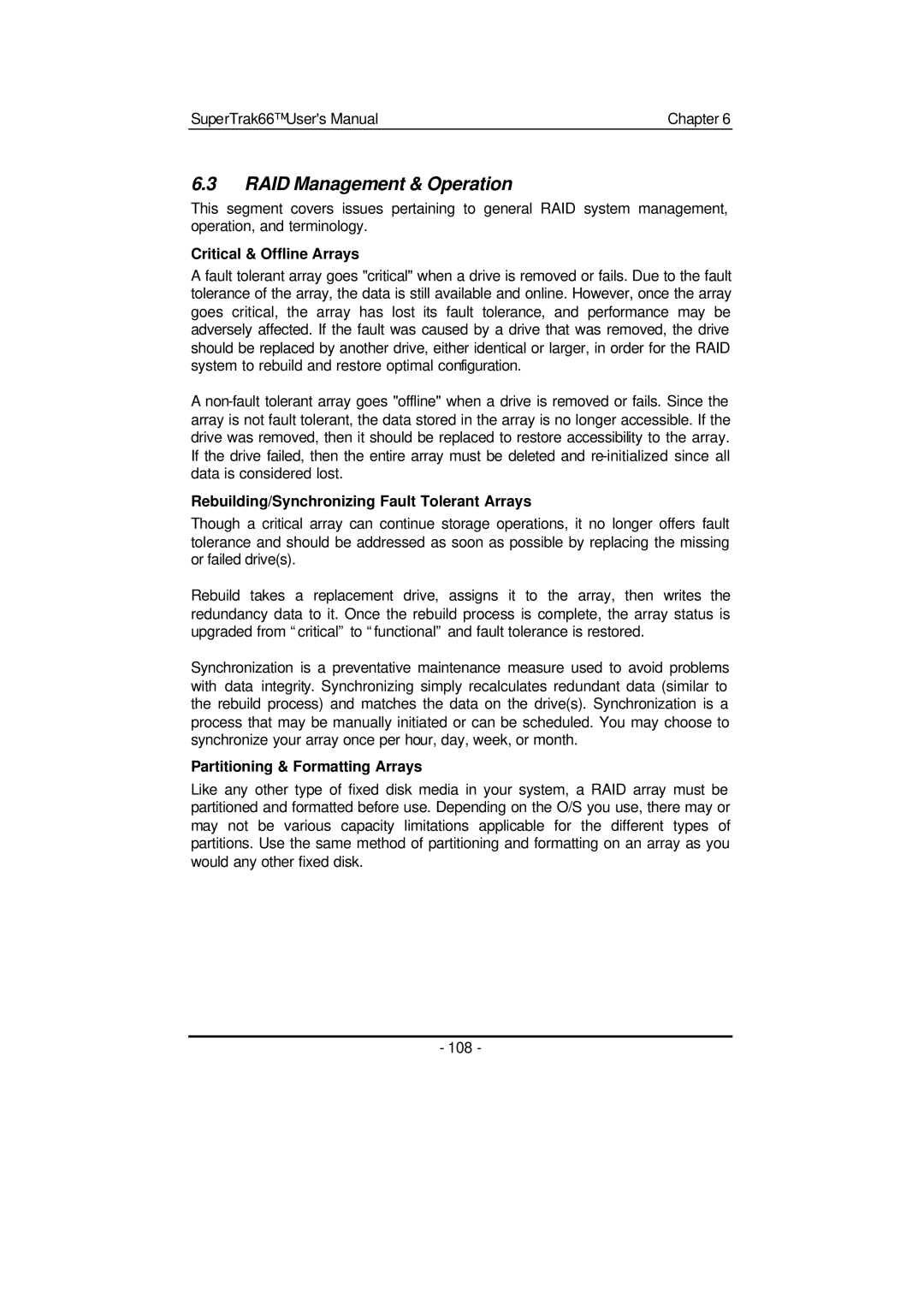SuperTrak66™ User's Manual | Chapter 6 |
6.3RAID Management & Operation
This segment covers issues pertaining to general RAID system management, operation, and terminology.
Critical & Offline Arrays
A fault tolerant array goes "critical" when a drive is removed or fails. Due to the fault tolerance of the array, the data is still available and online. However, once the array goes critical, the array has lost its fault tolerance, and performance may be adversely affected. If the fault was caused by a drive that was removed, the drive should be replaced by another drive, either identical or larger, in order for the RAID system to rebuild and restore optimal configuration.
A
Rebuilding/Synchronizing Fault Tolerant Arrays
Though a critical array can continue storage operations, it no longer offers fault tolerance and should be addressed as soon as possible by replacing the missing or failed drive(s).
Rebuild takes a replacement drive, assigns it to the array, then writes the redundancy data to it. Once the rebuild process is complete, the array status is upgraded from “critical” to “functional” and fault tolerance is restored.
Synchronization is a preventative maintenance measure used to avoid problems with data integrity. Synchronizing simply recalculates redundant data (similar to the rebuild process) and matches the data on the drive(s). Synchronization is a process that may be manually initiated or can be scheduled. You may choose to synchronize your array once per hour, day, week, or month.
Partitioning & Formatting Arrays
Like any other type of fixed disk media in your system, a RAID array must be partitioned and formatted before use. Depending on the O/S you use, there may or may not be various capacity limitations applicable for the different types of partitions. Use the same method of partitioning and formatting on an array as you would any other fixed disk.
- 108 -
